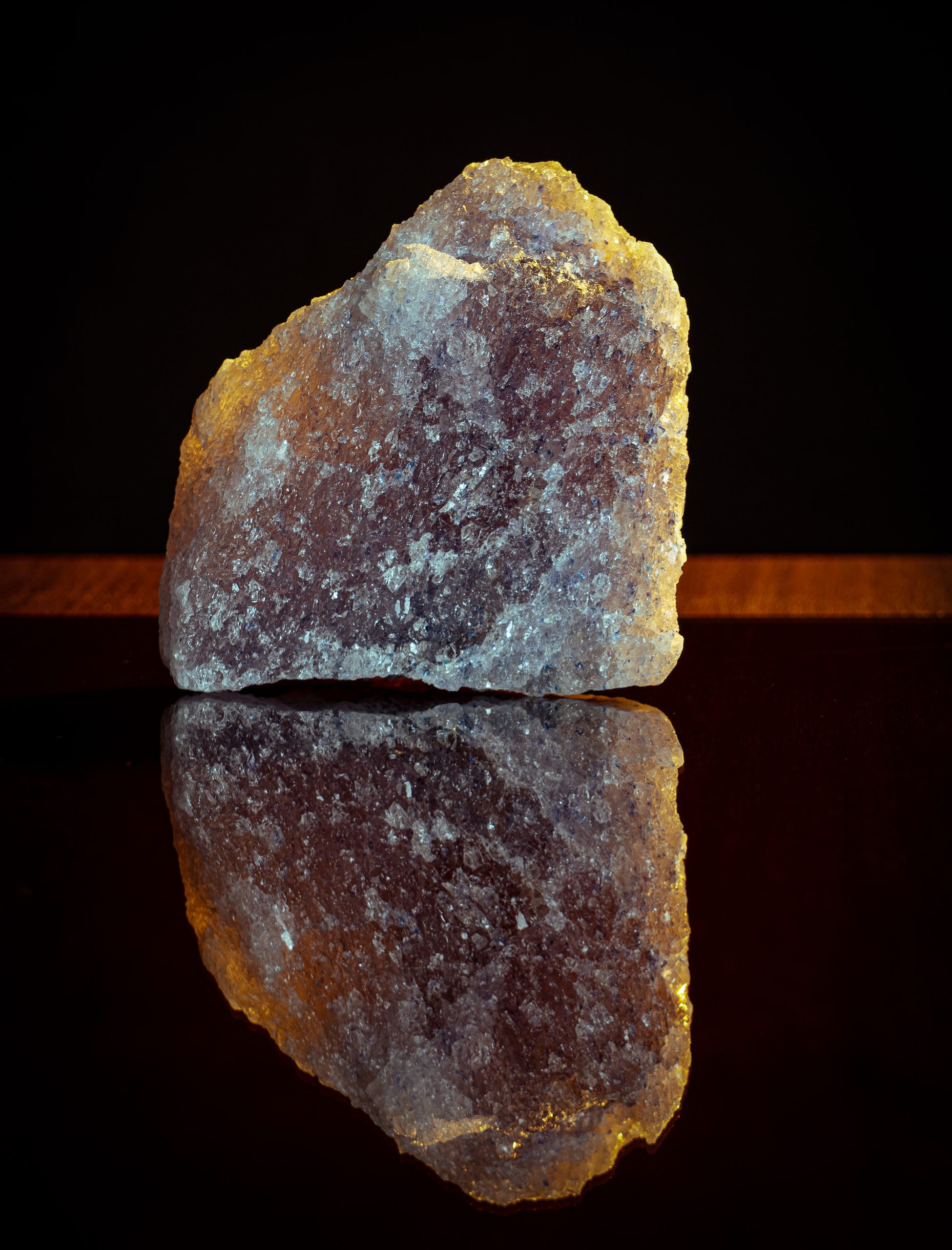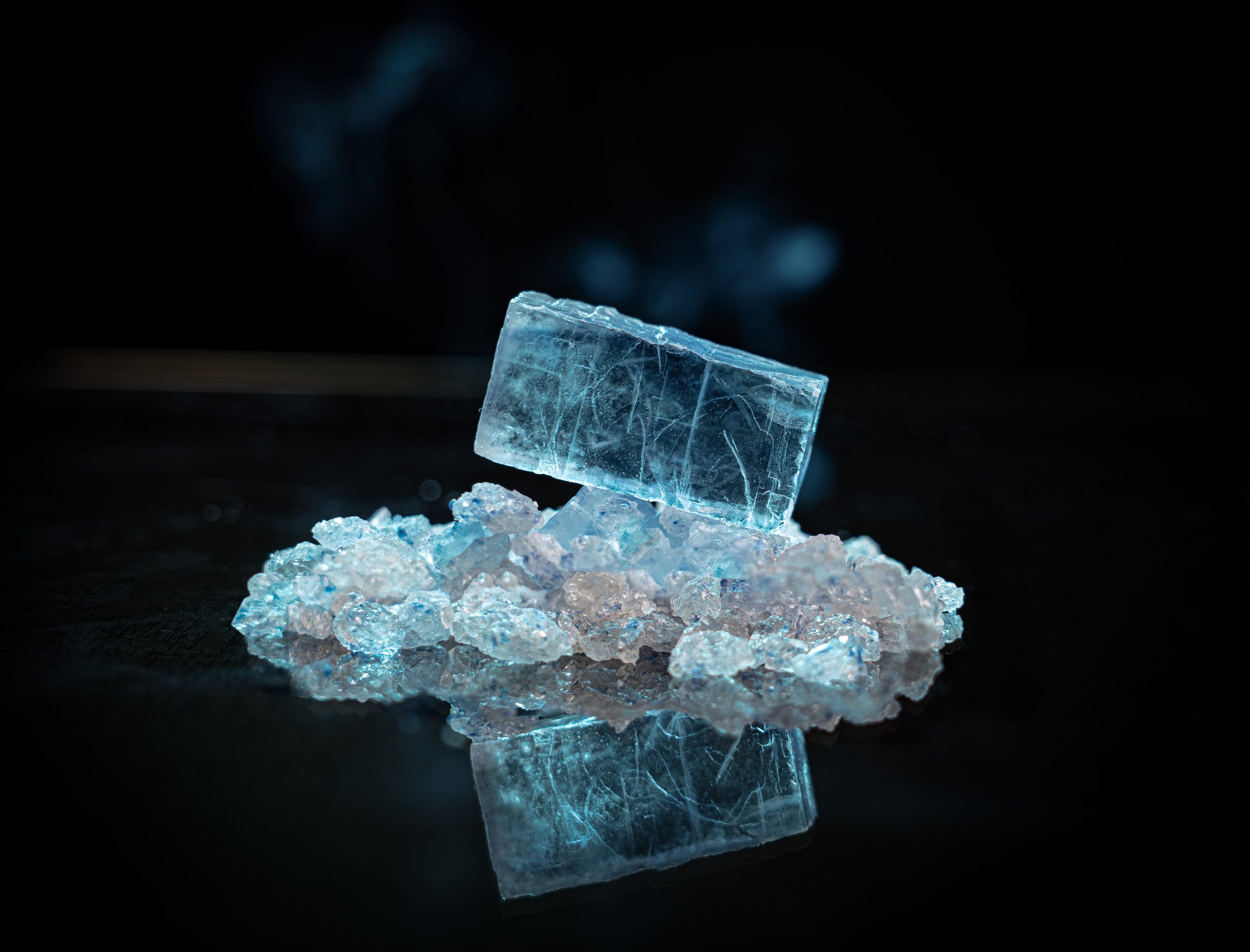Blue Salt 2025 UPDATE
Abstract
Contents
- Abstract
- To order blue salt, just click.
- What is the blue salt?
- The history of Persian blue salt
- Properties of Persian blue salt
- Color:
- Persian blue salt is visually striking, with crystals that range in color from light sky blue to
- Taste:
- Blue crystal salt has a more intense flavor compared to other types of salt.
- Purity:
- Natural blue salt is celebrated not only for its striking color but also for its exceptional
- What cusses the blue salt color?
- Persian Blue Salt Mine
- Rarity
- Blue salt is packed with minerals, making it highly beneficial for health and well-being.
- 1. Antiseptic and Antibacterial Properties
- 2. Regulates Blood Pressure (Helps Manage Both High and Low Blood Pressure)
- 3. Supports the Body’s Balance Regulation
- 4. Powerful Stress Reliever
- 5. Helps with digestion
- 6. Relieves certain respiratory issues
- 7. Boosts the immune system
- 8. Rich mineral compound
- 9. Supporting Weight Loss
- What is the Difference between Blue Salt and Pink Salt?
- Where to buy blue salt

Blue salt is the same as regular table salt, but its beautiful color comes from the presence of
unique minerals like sylvinite, iron, calcium, and potassium, along with special
environmental conditions such as humidity and pressure. The blue color of its crystals is
completely natural and caused by potassium chloride.
Blue salt is one of the rarest types of salt in the world. In Iran, it can only be found in the
mountains surrounding the city of Semnan, deep within the mines of Garmsar, Although
blue salt is also found in three other countries, Iran’s blue salt holds a unique status as the
only edible blue salt in the world, giving it a prestigious rank among all salts.
What is the blue salt?
Blue salt is one of the rarest and oldest salts in the world. Blue salt is known by various
names, such as True Rock Salt, Blue Halite, and Persian blue Salt. As its name indicates,
Persian blue salt is extracted from the heart of Iran’s mountain. The mine of this vibrant salt
is located in Semnan province, in the Garmsar city. Blue salt is also found in three other
countries, but Persian blue salt stands out above all, as it is the world’s only edible blue salt.
This mineral is only found in halite salts. While their usual color is pink, the blue variant is
extremely rare. Blue salt is traditionally hand-mined, following an old tradition, and
extracted in much the same way miners dig for gold, as the “blue gold” veins run through
ordinary rock salt like precious metal seams. Just like gold, this salt is rare and scarce.
Mining blue salt is a time-consuming and challenging process. Large amounts of rock salt
(around 100 tons) must be crushed to access the beautifully colored blue crystals hidden
within. Given the difficulty of extraction and its rarity, it’s more accurate to say that it is
discovered rather than mined. This unique Persian blue salt gets its captivating and eye catching color from a potassium chloride mineral called sylvinite, which forms naturally
within the salts structure. The beautiful hue of its crystals is the result of the way light
refracts through them. This unique light refraction is caused by the intense pressure under
which the salt was formed millions of years ago. There are absolutely no artificial additives
in it.

The history of Persian blue salt
Among the wide variety of salts, Persian blue salt stands out as the rarest and most precious
one. Persian blue salt, unlike sea salt which is harvested from salt ponds, was formed over
millions of years through a natural fossilization process. Iranian blue salt is a salt fossil or
mineral gemstone, whose crystals formed approximately 100 million years ago. This salt,
also known as the Eastern Sapphire, was formed through the evaporation of ancient seas
and inland lakes. Persian blue salt dates back 100 million years and existed alongside species
that vanished during the mass extinction of the dinosaurs at the end of the Cretaceous
period, due to an asteroid impact, a volcanic eruptions, or the retreat of ancient oceans:
large marine and flying reptiles, the ammonites (ancestors of the nautilus) and dinosaurs.
This precious Persian blue salt is over 100 million years old, formed in the depths of
prehistoric seas and lakes at a long time before humans existed and completely untouched
by any environmental pollution. As a result, it is rich in minerals, holds high nutritional value
and considered one of the cleanest and purest salt in the world. Blue salt has deep roots in
Iran’s ancient history and is considered one of the country’s natural heritages. The mines of
this salt are located in the Garmsar and Semnan regions, which are known as some of the
oldest salt sources in the world. In the past, this salt was gifted to royal courts for its beauty
and healing properties, and it held a special place in traditional Iranian medicine.

Properties of Persian blue salt
-
Color:
Persian blue salt is visually striking, with crystals that range in color from light sky blue to
deep sapphire tones. The salt’s vivid blue streaks are naturally scattered through translucent
white or clear crystals, creating a rare and mesmerizing appearance. Each piece is unique,
with the intensity and distribution of the blue coloration varying from crystal to crystal,
making it both a culinary and visual masterpiece.
- Texture:
Persian blue salt has a firm, crunchy texture with naturally formed crystals that feel slightly
coarse to the touch. When crushed, it breaks into crisp, uneven shards, offering a satisfying
crunch. Despite its solid structure, it dissolves quickly on the tongue, releasing its
rich mineral flavor. - Mineral composition:
- Sodium chloride (NaCi)
The primary component is sodium chloride (NaCl), making up about 85–90% of the salt. This
is the same mineral that gives all edible salts their characteristic salty flavor. Sodium
chloride is essential for maintaining fluid balance in the body, supporting nerve function,
and helping muscles to work properly. - Sylvite (potassium chloride, kci)
Sylvite (potassium chloride, KCl) accounts for around 5–7% of blue salt. Sylvite is responsible
for the salt’s striking blue crystals. Potassium is a vital mineral that supports heart health,
nerve signals, and muscle contractions. The crystal structure of sylvite refracts light
differently, creating the rare blue appearance. - Calcium (Ca)
Small amounts of calcium (Ca), approximately 0.1–0.5%, are also present. Calcium is crucial
for strong bones and teeth, nerve communication, and blood clotting. It slightly sharpens
the flavor of the salt, giving it a cooler or sharper edge compared to common salt. - Magnesium (Mg)
Magnesium (Mg) is found in smaller amounts, around 0.05–0.3%. Magnesium supports
muscle and nerve functions, helps in energy production, and promotes heart health. It can
add a very slight bitterness to the salt, which some chefs appreciate for its complexity. - Iron (Fe)
Trace amounts of iron (Fe) are also found in Persian blue salt. Iron is essential for
transporting oxygen in the blood. Although the quantity is very small, it adds subtle layers to
the salt’s overall flavor profile. - In addition, blue salt contains very small traces of other minerals such as zinc and
copper, which contribute minor health benefits and enrich the depth of its taste.
-
Taste:
Blue crystal salt has a more intense flavor compared to other types of salt.
It delivers a strong initial saltiness, followed by a pleasant, slightly acidic aftertaste that creates a tingling
sensation on the palate. This distinctive taste is primarily due to its high potassium content.
The presence of potassium makes the salt taste very salty at first, with a hint of tartness that
adds a refreshing, flavorful twist.
You can use blue salt just like regular salt, and the amount you use can be adjusted
according to your personal preference.
-
Purity:
Natural blue salt is celebrated not only for its striking color but also for its exceptional
purity. It is composed primarily of sodium chloride (NaCl), often exceeding 98%, enriched
with traces of natural minerals like potassium and magnesium that enhance its value and
character without compromising its cleanliness. Compared to many other salts, blue salt is
free from heavy contaminants and artificial additives, making it a naturally pure and
premium choice. Its crystal-clear structure and rare mineral inclusions reflect the
untouched, pristine environments in which it forms.
What cusses the blue salt color?
plates subjected salt deposits to intense geodynamic pressure, leading to structural
transformations within the crystals. This process altered the salt's crystals structure,
allowing mineral potassium chloride to become incorporated into its lattice. Such
compounds typically appear pink or yellow, but under extreme pressure, the crystal lattice
shifts. When light hits the salt crystals, a unique refraction occurs, giving the salt a magical
blue appearance.


Persian Blue Salt Mine
- Mine of Garmsar (Semnan):
Location: Semnan Province, Garmsar County
Feature: The only active mine extracting natural blue salt in the world
Type of Rock: Salt rock with sylvite and halite veins
Fame: Known as a natural treasure due to its unique blue color, rare minerals,
and high quality. - Aliabad Mine (Garmsar)
Feature: Home to massive salt rock formations with rare blue veins
Some of the purest blue salt is sourced from this mine. - Legran Mine
Location: Near Garmsar
Feature: This mine is renowned for the colorful variety of its salt rocks, including
white, pink, and blue. - Taroud Mine (Shahroud)
Location: Near Shahroud County
Feature: Primarily composed of common mineral salts, but in some areas contains
rare blue veins. - Sorkheh Mine
Location: Sorkheh County, Semnan Province
Feature: Primarily known for producing livestock and industrial salt, but traces of blue salt
have also been found sporadically. - Bostam Mine (Near Shahroud)
Location: Surrounding areas of Shahroud
Feature: One of the older mines, known for its wide range of salt colors, with rare blue veins
found in certain sections. - Common Features of These Mines:
– Unique geological pressure and conditions have led to the formation of blue crystals.
– Sylvite (a natural form of potash) is the primary cause of the blue coloration.
-Due to the rarity and beauty of their salt, many of these mines have also become
popular mineral tourism destinations.
Rarity
forms under unique and highly specific geological conditions, where intense pressure,
mineral composition, and time come together to create its distinctive blue crystals. The blue
coloration primarily comes from the presence of sylvite, a natural potassium mineral, which
is extremely rare in salt deposits. Currently, natural blue salt is extracted from only a few
known locations worldwide, with the most famous and active mines located in the Garmsar
region of Iran. Due to its extraordinary rarity, stunning appearance, and limited production,
blue salt is considered a true geological treasure, prized by collectors, chefs, and
luxury markets alike.
Blue salt is packed with minerals, making it highly beneficial for health and well-being.
1. Antiseptic and Antibacterial Properties
The combination of water and mineral blue salt creates a powerful disinfectant solution. A
solution made with crystalline blue salt has strong antimicrobial and antiseptic properties
and offers a wide range of uses. Some of the remarkable benefits of this solution include
preserving food, disinfecting the mouth and teeth, treating and controlling throat infections
and colds, and sanitizing the skin.
According to findings in both modern medical science and traditional medicine, the human
mouth is a gathering place for various microbes and bacteria. However, consuming salt
before and during meals helps eliminate these harmful microorganisms.


2. Regulates Blood Pressure (Helps Manage Both High and Low Blood Pressure)
Although we have often been warned that salt consumption can play a major role in the
development of high blood pressure, and doctors frequently advise caution even with small
amounts of salt, recent research by American physicians has challenged this belief.
Doctors and scientists at the University of Southern California (USC) have demonstrated in
their latest report that the potassium found in natural salt, particularly in crystal blue salt
which is especially rich in potassium, actually helps reduce the risk of high blood pressure.
They found that the potassium in salt and other potassium-rich sources helps the body
quickly eliminate excess sodium and contributes to lowering blood pressure levels.
3. Supports the Body’s Balance Regulation
Low sodium levels in the body are the most common type of electrolyte imbalance. At first,
it might seem surprising to learn that our bodies actually generate electricity. The salt
consumed and present in the body, known as an electrolyte, is an ionic compound that
breaks down in water into positive and negative electrical charges, enabling the body’s
electrical activity.
This electrical activity is essential for coordinating muscle movement, improving heart
function, enhancing fluid absorption, supporting waste elimination, and ensuring the proper
functioning of the nervous system.
People often lose electrolytes through sweating, illness, medication use, or other factors.
This is where the consumption of blue salt plays a vital role in helping to restore and
maintain the body’s electrolyte balance.


4. Powerful Stress Reliever
Studies by American scientists show that consuming a proper amount of natural salt,
especially blue salt, during stressful and tense situations can increase the production of
oxytocin. This is the hormone responsible for feelings of happiness and well-being.
5. Helps with digestion
Saliva is produced and released by the salivary glands. The more thoroughly saliva mixes
with food, the faster the food passes down the throat and the easier it is to digest. When
salt enters the mouth, it stimulates the glands around the oral cavity, speeding up their
secretion and increasing saliva production. As a result, food is prepared for digestion more
quickly and efficiently.


6. Relieves certain respiratory issues
The benefits of blue salt extend far beyond its consumption. Today, large salt rooms, known
as salt therapy or halo therapy centers, have been established around the world. In this
method, patients with respiratory issues are placed in rooms completely covered with
natural salt, and their bodies are exposed to salt particles. During the therapy, they breathe
in air filled with fine salt particles.
According to the American Lung Association, a widely accepted theory explains that inhaled
salt particles draw water into the airways and lungs, thinning the mucus. This process helps
ease dry coughing and supports improved respiratory function.
7. Boosts the immune system
Natural salt, especially blue salt, is one of the essential and vital nutrients required for the
body’s proper functioning. It plays a critical role in supporting healthy brain function and
maintaining a balanced metabolism.
Blue salt, typically sourced from mineral salt rocks, is not harmful to health; on the contrary,
based on traditional medicine, historical sources, and modern medical data, it acts as a
powerful “natural antidote” within the human body. It helps protect against a range of
diseases, including heart, kidney, liver, and skin conditions.


8. Rich mineral compound
One of the outstanding features of blue salt is its high content of essential minerals such as
potassium, calcium, and magnesium. These minerals play a vital role in regulating various
bodily functions. The potassium in blue salt helps regulate blood pressure and maintain
electrolyte balance. Calcium is essential for healthy bones and teeth, while magnesium
supports muscle function and helps reduce stress.
9. Supporting Weight Loss
Blue salt can also play a role in supporting weight loss. It helps regulate blood sugar levels
and can reduce feelings of hunger. Consuming blue salt in moderation may boost the body’s
metabolism, aiding in fat burning. Additionally, its natural diuretic properties help flush out
toxins and excess water from the body, further contributing to weight loss.

What is the Difference between Blue Salt and Pink Salt?
Both blue salt and pink salt (commonly known as Himalayan salt) are unique types of salt
with distinct nutritional properties. Iranian blue salt, rich in potassium, calcium, and
magnesium, is often recommended for regulating blood pressure and addressing certain
respiratory issues. It has gained attention as a beneficial option for individuals with blood
pressure concerns and is also known to help strengthen the immune system.
Pink salt, sourced from the Punjab region of Pakistan, is equally valued for its nutritional
benefits. Famous for its distinctive color and flavor, it is often used to support conditions
such as hypothyroidism, regulate blood sugar levels, and improve digestion.
In conclusion, each of these salts contains different minerals that may offer varying health
benefits. When choosing between them, it’s best to consider your specific needs and
health conditions.
Where to buy blue salt
If you are looking for authentic Persian blue salt, look no further than Sky Salt. As the
exclusive supplier of this rare and luxurious mineral, we are proud to deliver the highest
quality blue salt to customers around the world. Our direct sourcing ensures purity,
authenticity, and an unmatched standard of excellence. Trust Sky Salt to bring the rare
beauty and unique flavor of genuine Persian blue salt directly to your table.
